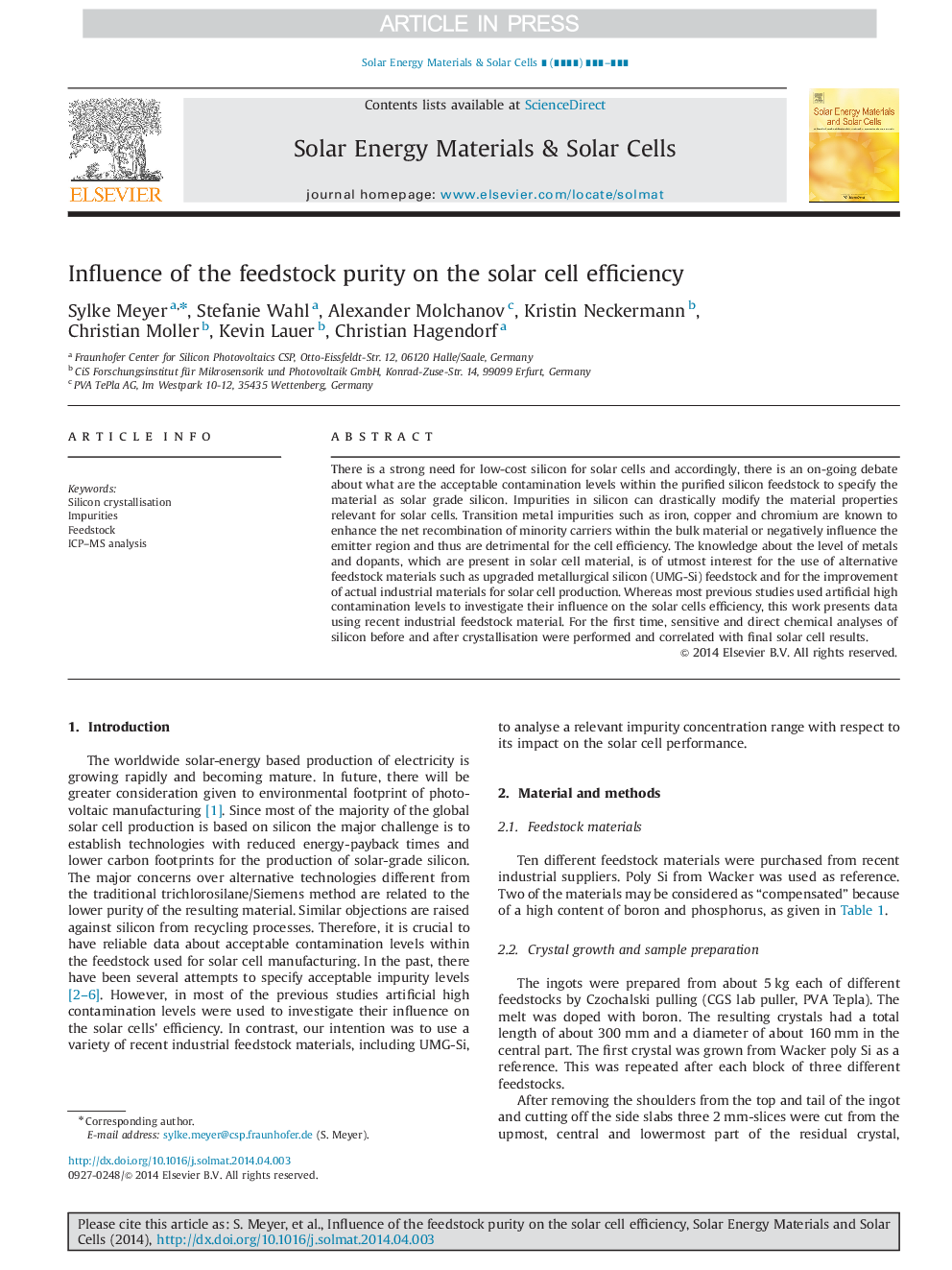| Article ID | Journal | Published Year | Pages | File Type |
|---|---|---|---|---|
| 6535656 | Solar Energy Materials and Solar Cells | 2014 | 5 Pages |
Abstract
There is a strong need for low-cost silicon for solar cells and accordingly, there is an on-going debate about what are the acceptable contamination levels within the purified silicon feedstock to specify the material as solar grade silicon. Impurities in silicon can drastically modify the material properties relevant for solar cells. Transition metal impurities such as iron, copper and chromium are known to enhance the net recombination of minority carriers within the bulk material or negatively influence the emitter region and thus are detrimental for the cell efficiency. The knowledge about the level of metals and dopants, which are present in solar cell material, is of utmost interest for the use of alternative feedstock materials such as upgraded metallurgical silicon (UMG-Si) feedstock and for the improvement of actual industrial materials for solar cell production. Whereas most previous studies used artificial high contamination levels to investigate their influence on the solar cells efficiency, this work presents data using recent industrial feedstock material. For the first time, sensitive and direct chemical analyses of silicon before and after crystallisation were performed and correlated with final solar cell results.
Keywords
Related Topics
Physical Sciences and Engineering
Chemical Engineering
Catalysis
Authors
Sylke Meyer, Stefanie Wahl, Alexander Molchanov, Kristin Neckermann, Christian Möller, Kevin Lauer, Christian Hagendorf,
